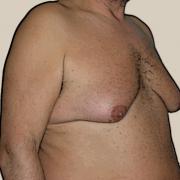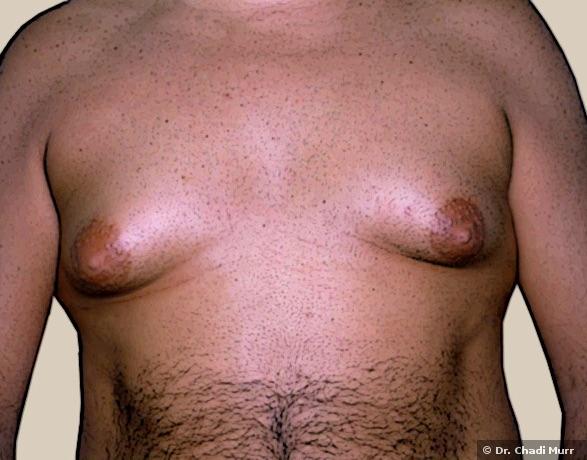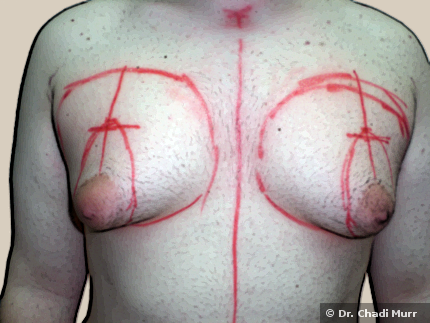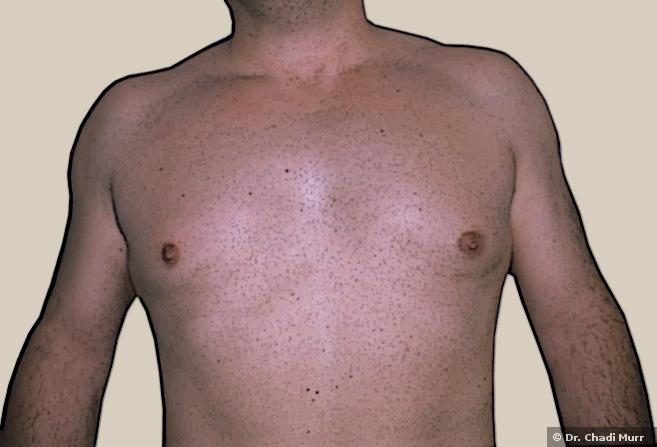Welcome to Dr. Chadi Murr
Gynecomastia or the Correction of Abnormal Development of Breast Tissue in Men – Plastic Surgery
About half of all men today have excess localized fat and/or glandular tissue in one or both breasts. While often not a serious medical problem, enlarged breasts in men can be painful.
Read More
They can also cause embarrassment, especially among boys and young men who get teased for having “breasts”. This condition is most common in teen boys.
It is mainly due to the fluctuations in sex hormones that occur during puberty. In 75 percent of these cases, the excess breast tissue usually disappears without any treatment within two years, and within three years in 90 percent of them.
In older men, Gynecomastia often results from decreasing levels of the male sex hormone (testosterone), which diminish with age. Moreover, men experience an increase in body fat with age and a resultant rise in the ratio of the female sex hormones (estrogens) to the male sex hormones (androgens).
Other causes include the use of certain medications like anti-anxiety pills, ulcer medications, cancer treatments and even the use of marijuana and heroin. Some diseases can also cause enlarged breasts like hyperthyroidism, gland tumors, kidney or liver failure…
Read MoreIn some cases the appearance of fat on the chests of men and boys is not Gynecomastia, but Pseudogynecomastia or fatty male breast enlargement, a condition that can be treated with diet or exercise. By contrast, true Gynecomastia will not improve with diet and exercise.

Am I a good candidate?
You are a good candidate for Gynecomastia treatment if you are healthy, of relatively normal weight and bothered by the feeling that your breasts are too large. Your breast development must also have stabilized, and you must have realistic expectations about what the surgery can and cannot accomplish.Read More
I discourage male breast reduction if you are overweight or obese and have not first attempted to lose weight.
A consultation is necessary to determine if you are a good candidate for male breast reduction. Besides taking your medical history, I will also carry out a physical exam to measure the extent of excess fat and glandular tissue in the chest area. I will also conduct diagnostic testing to determine the underlying cause of your gynecomastia. This will include tests of the glands that secrete the hormones causing enlarged breasts.

How is it done?
Breast reduction in male is typically performed in an hour or two, but a more extensive male breast reduction may take longer.
The surgery can be done under general or local assisted anesthesia. I will discuss your anesthesia options with you once your surgery is confirmed. If your enlarged breasts consist mainly of excessive fatty tissue, I may resort to liposuction alone. Read More
If excess glandular tissue is the major cause, I will remove the tissue with a scalpel. This excision may be carried out alone or in combination with liposuction.
The incision is made around the areola. The excess glandular tissue is cut, as well as the fat and skin from around the pigmented area surrounding the areola and from the sides and bottom of the breast. Major reductions that involve the removal of a large amount of tissue and skin may require larger incisions.
For breast reduction that only consists of liposuction, I will make a half-inch incision around the edge of the areola or in the underarm area to suck out the excess tissue and fat.
After surgery, a small drain is inserted through a separate incision to remove excess fluids. Once closed, the incisions are covered with a dressing. The chest may be wrapped to keep the skin firmly in place.
For breast reduction that only consists of liposuction, I will make a half-inch incision around the edge of the areola or in the underarm area to suck out the excess tissue and fat.
After surgery, a small drain is inserted through a separate incision to remove excess fluids. Once closed, the incisions are covered with a dressing. The chest may be wrapped to keep the skin firmly in place.


How long is the recovery?
The drains will be removed two to three days after the surgery and you will be able to resume work in one week and practice sports within three weeks. Read More
I will give you specific instructions concerning how to care for your surgical site, what medications to take in order to relieve the pain and reduce the risk of infection.
Be sure to ask all the questions concerning what you can expect during the recovery period.
Disclaimer: The info presented on this page is indicative and for generic use only. Each patient’s case is unique and will be studied by Dr. Chadi Murr for full assessment.
